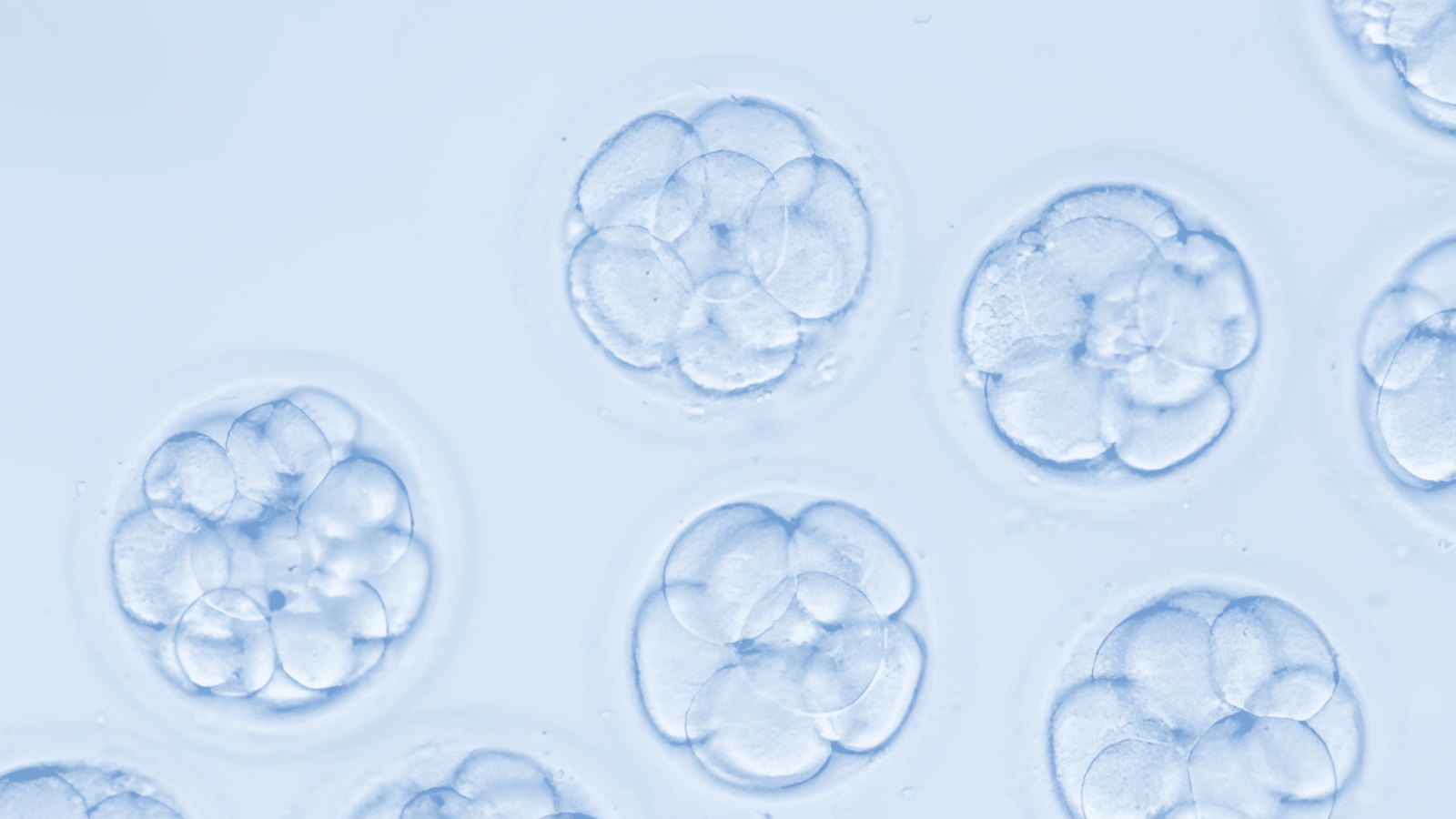You’re finally at the end of your IVF egg retrieval cycle, but now you’re left with a confusing embryology report. Reading that report can be daunting, and going down the Google rabbit hole only makes it worse. So let’s attempt to break it all down in a way that makes sense, shall we?
Here’s a 101 course on embryo grading.
Embryo Grading Chart
The majority of labs are grading embryos based on the Gardner grading scale. Labs are not required to follow this scale, but it was created to try to standardize grading across clinics.
The Gardner scale grades Day 5, 6, and 7 embryos based on three things:- expansion
- inner cell mass (ICM)
- trophectoderm
This leads to embryo grades that look something like this: 3AB, 4BB, 2BC, etc.
Keep in mind that while this method of embryo grading is pretty standard, not all labs grade this way. If you’re ever unsure of what your report means, ask your care team, and if your clinic isn’t interested in answering your questions, that’s a big red flag in my book.
You’re investing so much time, money, and emotional effort into the process, you deserve to understand what’s going on with your care.

Embryo Expansion
Expansion is represented in the number you see at the beginning of your embryo grade. Numbers go from 1-6 and tell you how mature the embryo is, or how thin the shell (the zona) of the embryo is.
As the cells of the embryo continue to multiply and grow, the zona thins and eventually the embryo hatches out of the zona. All embryos have to hatch to implant into the uterus. Expansion doesn’t necessarily indicate the quality of the embryo, but it does tell you its maturity.
Embryo Expansion Grading
- Grades 1-4 are embryos that have not yet hatched out of the zona
- Grades 1 and 2 are very early in development and often are not ready for freezing, transfer, or biopsy, depending on the lab
- Grades 3 and 4 are the most common to see and indicate a good level of maturity
- Grade 5 indicates that an embryo is hatching out of the zona. This one can be a little misleading because some labs artificially hatch, or laser, their embryos on Day 3 (called assisted zona hatching, or AZH). This means that most of the embryos will be hatching on Day 5, but not naturally. Hatching artificially is not a bad thing, it's just good to understand the difference
- Grade 6 is when the embryo is fully hatched out of the zona. These embryos are more difficult for embryologists to work with and are more susceptible to cryo damage.
Embryo Inner Cell Mass Grading
The ICM is represented by the first letter you see in an embryo grade.
The inner cell mass is what becomes the baby and is basically a small grouping of cells inside the embryo. The letters for grading the ICM go from “A” to “D,” with most freezing only those with an “A” or “B” grade.
The letter “A” is considered good, “B” is fair, and “C” is poor. Technically, based on the Gardner scale, a grade “C” is an embryo with no visible inner cell mass but this is one where it very much depends on the clinic.
A good inner cell mass is well organized, compact, and has little cell death.
Embryo Trophectoderm Grading
The trophectoderm is the last letter listed in the embryo grade. The trophectoderm will eventually becomes the placenta. It’s graded exactly like the ICM, using letters “A” to “D.”
A good trophectoderm is considered to be grade A and will have a large number of cells and little to no “bald” spots. There will be very few extruded or dead cells.
The trophectoderm becomes even more important if you’re doing preimplantation genetic testing (PGT) in which an embryo must be biopsied for testing.
Embryos with poor quality trophectoderm are not good candidates for biopsy because we have to be able to take 6 to 8 cells to send off to biopsy while still leaving enough cells for the embryos to survive. When you’re testing your embryos with PGT, we’re essentially testing the cells in the placenta, not the cells of the fetus.
Embryo Grade Meaning
Now that we’ve broken down each part of the grading system, we can put all three parts together.
The Gardner scale also has guidelines on what embryos are considered good, fair, and poor based on the combination of ICM and trophectoderm grades. Expansion isn’t included in this part of the grading, but remember, it doesn’t necessarily mean an embryo is good or bad.
The Gardner scale breaks down embryos as follows:
- “Good” embryos are graded “AA” or “AB”
- “Fair” embryos are grades “BA” and “BB”
- “Poor” embryos are graded with a “C” (BC, CB,CC).
How is an embryo chosen for transfer?
Just like with embryo grading, choosing which embryo to transfer if you have more than one viable option is dependent on the lab.
Most clinics will consider these criteria in this order when choosing which embryo to transfer:
- PGT results: For those who do PGT-A, the genetic status of an embryo is the first thing we consider. We will consider the euploid (normal) embryos for transfer.
-
Embryo Day: Some studies show slightly higher pregnancy rates with Day 5 embryos compared to Day 6 or Day 7 embryos. As technology improves, we’re seeing less and less of a gap in success rates between Day 5 and Day 6, but most labs will still choose a Day 5 embryo over a Day 6 to transfer.
- Embryo Grade: If all embryos are chromosomally normal and all are frozen on Day 5, for example, then we’re choosing based on grade. Some studies show a difference in pregnancy rates based on grade, so your embryologist will likely choose a Day 5 4AA over a Day 5 4BB.
Unfortunately, choosing an embryo for transfer isn’t always so black and white.
For example, you may have a sex preference for which embryo to transfer, or the embryologist may have embryos to choose from that are considered “equal” in quality.
If you have a Day 5 4BB embryo and a Day 6 4AA embryo, some embryologists will choose the 4AA because it’s a higher grade even though it took a Day longer to develop to that stage. Some embryologists will choose the Day 5 4BB embryo because it developed sooner, even though it’s a lower grade.
If you’re curious what your lab would choose, reach out and ask! Labs are often willing to share their decision-making process.
Wnat to know what happens during an embryo transfer? Check out our article where our fertility nursing team walks you through what to expect from an embryo transfer.
Final Thoughts on Embryo Grading
A few more things to keep in mind on embryo grading:
- Grading is subjective! Some clinics have embryologists that grade very strictly and some are more lenient. The goal is to have all embryologists in a clinic grading similarly. If you ever want to move your embryo to another clinic, keep in mind it may be regraded once thawed for transfer.
- Hatching embryos often look like they’re splitting, but they’re not. We can’t tell if an embryo will split into identical twins and there is nothing we can do to cause it.
- We also can’t tell just by looking at an embryo if it is male or female. The only way to do that is with embryo biopsy for PGT-A testing.
- And most importantly, while grading is important, plenty of poorly graded embryos go on to make beautiful, healthy babies.







